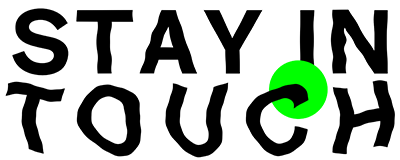2016 – »Each time a story helps me remember what I thought I knew, a muscle critical for caring about flourishing gets some aerobic exercise.«
Donna Haraway’s Staying with the Trouble. Making Kin in the Chthulucene revisited, part I
By Katrin Solhdju
Donna Haraway’s Staying with the Trouble. Making Kin in the Chthulucene
»We—all of us on Terra—live in disturbing times, mixed-up times, troubling and turbid times. The task is to become capable, with each other in all of our bumptious kinds, of response.« This first task that Donna Haraway assigns us Terra inhabitants, because we are inheriting a multitude of devastations, is followed hot on the heels with a second:»The task is to make kin in lines of inventive connection as a practice of learning to live and die well with each other in a thick present. Our task is to make trouble, to stir up potent response to devastating events, as well as to settle troubled waters and rebuild quiet places.« (1)
In Staying with the Trouble Haraway tells stories about some such lines of connection to reveal elements that can help us to learn to resist detrimental thinking and actions with their tendencies to reduce and deplete reality. As opposed to simply denouncing and critically examining these bad habits, Haraway takes a different path. She challenges her readers with an almost literary, sensual and humorous writing-persuasion style and draws them into a process that not only confronts them with new habits of »making and thinking«, but also familiarizes them step-by-step with a semiotic-material reality that affords an infinite number of other »ontological and epistemological possibilities«. (126)
With its occasional imploring tonality, Staying with the Trouble has an activating effect: like music from an unknown time, beguiling you with its first unsettling melody, the refrains and ritornelles, inviting you to seize them, play with them, to hum along. Imagine the book as a compilation of songs that accompany a rite of passage. A ritual that allows the singers to assume, test, and rehearse other modes of being. Modes distinguished by their capacity to entwine special types of awareness, feeling, perception, and thought, and thereby have their share in creating collective and collaborative vistas and sites for learning to live and die well together here on Terra—and not by refuting social, ecological, and (post-) colonial devastations, but in spite of them. Using very different materials, Haraway conveys stories of more or less successful processes of kin-making between diverse actors: cellular, bacterial, viral, animal, human, and more-than-human in nature. But what is at stake in the current situation, if not fine-tuning the least destructive processes, which allow science and politics, ecology and economy, as well as our bodies and immune systems to make kin with the coronavirus? And this might mean cultivating, as Haraway would have it, intimacy without proximity or with the particular proximity activated by vaccines.
Without neglecting the violent aspects of current circumstances—Haraway remains radically true to her motto that there never are or can ever be innocent positions—she outlines the forms that an earthly and historically anchored responsibility, namely in the literal sense of a response-ability, can assume. She writes against an irresponsible, dumb-hopeful, and blind to the lessons of history business as usual as well as all types of fatalistic cynicism. Staying with the Trouble takes stock of conceptual, artistic, scientific, and activist practices that share one assumption: that modernist categories of scientistic, individualist, colonial, or neoliberal persuasion have simply become untenable.»What happens when human exceptionalism and bounded individualism, those old saws of Western philosophy and political economics, become unthinkable in the best sciences, whether natural or social? Seriously unthinkable: not available to think with.« (30)
The realization alone that these categories no longer hold does not provide a clear-cut recipe; rather each concrete situation requires that we are ready to re-align our approaches. Haraway proposes the ambiguous acronym SF to this end—a proposal that both refers to her subjects while guiding her research process and writing. SF stands for such different things as »science fiction, speculative fabulation, string figures, speculative feminism, science fact, so far« (2) and creates an improbable yet all the more fruitful relationship between them.
»Science fact and speculative fabulation need each other, and both need speculative feminism. I think of SF and string figures in a triple sense of figuring. First, promiscuously plucking out fibers in clotted and dense events and practices, I try to follow the threads where they lead in order to track them and find their tangles and patterns crucial for staying with the trouble in real and particular places and times. In that sense, SF is a method of tracing, of following a thread in the dark, in a dangerous true tale of adventure, where who lives and who dies and how might become clearer for the cultivating of multispecies justice. Second, the string figure is not the tracking, but rather the actual thing, the pattern and assembly that solicits response, the thing that is not oneself but with which one must go on. Third, string figuring is passing on and receiving, making and unmaking, picking up threads and dropping them. SF is practice and process; it is becoming-with each other in surprising relays; it is a figure for ongoingness in the Chthulucene.« (3)
Accordingly, the book functions as a cat’s cradle, inviting the reader to pick up on a thread of argumentation at one point or the other and to spin it further. That already turns the idea of a summary ad absurdum. In the context of the pandemic’s challenges, I would like to pick up on a few threads Haraway introduces (stories/concepts/mottos) and spin them a bit further—as an invitation to reread and spin along.
First thread: »It matters which stories tell stories, which concepts think concepts. Mathematically, visually, and narratively, it matters which figures figure figures, which systems systematize systems.« (101) Discourse counts! Because, as Haraway puts it, tactics must be identified and multiplied, with all available resources, to cultivate timespaces of the possible in »capitalist ruins«: spaces of memory, commemoration, and resurgence that facilitate continuity and flourishing forms of coexistence. Here, we must also learn to change the story: »The stories of both the Anthropocene and the Capitalocene teeter constantly on the brink of becoming much Too Big.« (50) Too big insofar as these concepts of scale adjust the perspective in such a way that it becomes almost impossible to keep momentums, actions, material but also imaginative practices palpable. With their too-big stories, they have the tendency to clutter the view of shimmers of the possible, whereas Haraway aims to foster a sensorium to perceive and track such moments. But Haraway does not counter the too-big stories with micro-stories, rather with ones that are »just big enough«, a term she borrows from her colleague James Clifford. They are stories »just big enough to gather up the complexities and keep the edges open and greedy for surprising new and old connections«. (101)
In this light, the subtitle of the book Making Kin in the Chthulucene becomes clear. The Chthulucene proclaimed by Haraway refers to an oscillating timespace that transcends temporalities and spatialities, neither pure fiction nor pure fact, which she aligns with the big stories. While the too-big stories have considerable robustness, the Chthulucene must be nurtured and cared for, perpetually reconstituted, populated anew, and collectively sustained in order to protect it from disappearing: »I propose a name for an elsewhere and elsewhen that was, still is, and might yet be: the Chthulucene.« (31) »Maybe, but only maybe, and only with intense commitment and collaborative work and play with other terrans, flourishing for rich multispecies assemblages that include people will be possible. I am calling all this the Chthulucene—past, present, and to come.« (101) The Chthulucene, with all of the mythological figures—the Gorgon Medusa, the spider of the earth, and the symbionts—which Haraway conjures to anchor it in reality, serves as an effective linking tool: It enables Haraway to draw connections between both ancient and contemporary practices as well as biological knowledge production and political activist-artistic practices, provided they all experiment with terrestrial, chthonic, sympoietic collaboration. The wager of the Chthulucene proposal is that it incorporates a (narrative) perspective that draws attention to the underneath, behind, and beside of the Earth and its mythological and biological entities and practices. To practices and forms of existence that have no place in the »too-big stories« (of the Anthropocene, Capitalocene, etc.). Therewith a new space for action and imagination is activated—not escapist, quite the contrary, earthbound and radically realistic. Haraway calls upon us to confide in the potentials of thinking, the careful fabrication of conceptual abstractions, and above all, of storytelling; its potential to interrupt our habits and to hesitate in face of our familiar worldviews. Therein resides at least one of the strategies we urgently need in order to »make the Anthropocene as short/thin as possible and to cultivate with each other in every way imaginable epochs to come that can replenish refuge«. (100)
Second thread: There is equal shortage of refuges for human, nonhuman, and more-than-human critters: physical refuges in the sense of ecological niches as a requirement for the survival of all species, but also imaginary refuges that allow us to inhabit places, which with all right could be called home. A revival of refuges requires the reactivation of broken-off traditions as well as imaginative, speculative elements and stories. Of central importance are historical practices of memory, commemoration, reactivation, revival, revisiting, recuperation, recovery, reclaiming; but also the art of fabulation. For how we inherit and tell of the past and present is of existential importance when we speak about what we are going to pass on. One could say, for Haraway it is about our response-ability with respect to the question: »Do you know what you have done?« This question insists, as one of Haraway’s faithful intellectual companions Isabelle Stengers formulated it, the undeniable fact that our children and our children’s children »will have to live in the ruins of what we called progress«. »The answer we can give to them, the way in which we will have enabled ourselves to respond, will be part of our legacy to them: the poison of desperation and irresponsibility or rather the courage to find the difference between pure survival, everyone for themselves, and life come-what-may.«

